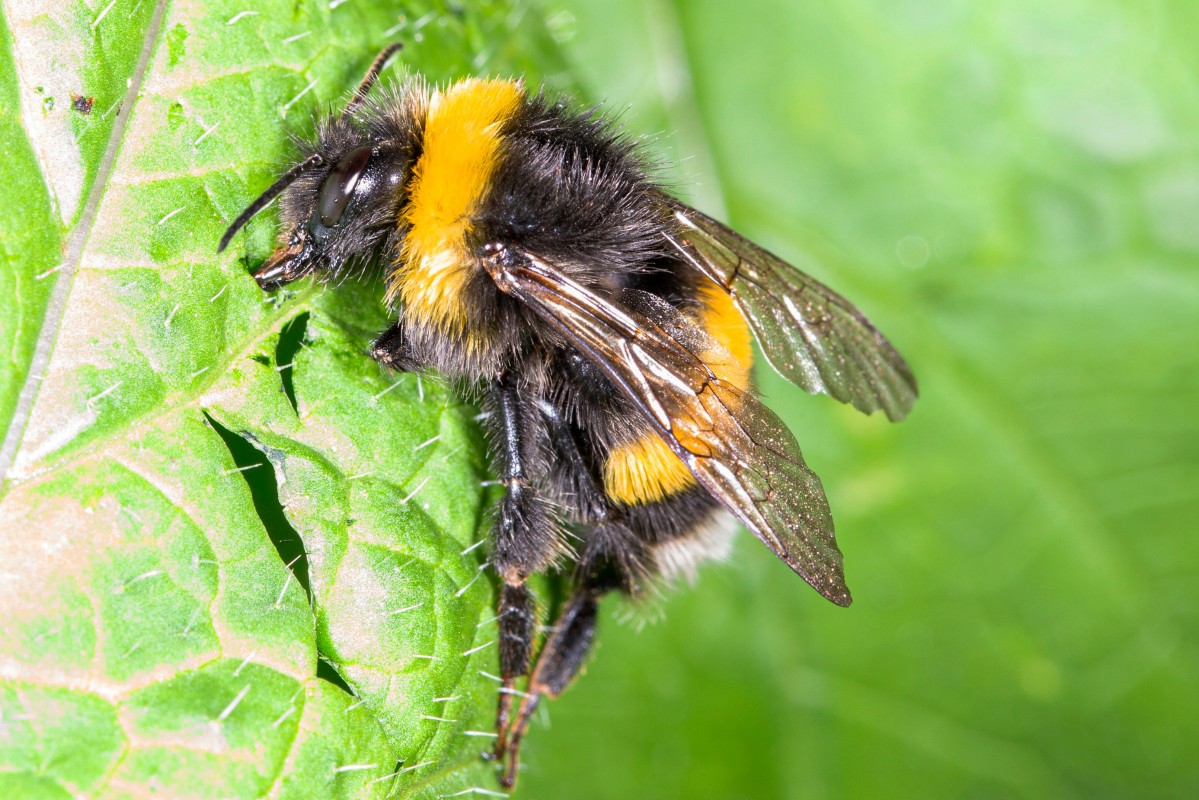 Bumblebees work hard. They are a great pollinator as they travel from flower to flower, 400 times faster than the average honey bee.
Bumblebees work hard. They are a great pollinator as they travel from flower to flower, 400 times faster than the average honey bee.
Perhaps because of climate change, bumblebees are waking up from their hibernation slumber earlier and earlier -- before flowers have bloomed.
In search of pollen, bumblebees will actually make little moon-shaped cuts in plant leaves to make the plant flower up to 30 days earlier than normal.
Pollination: A Mutual Relationship
For both plants and bees, the process of pollination is important for creating offspring.
As a bee collects nectar from a flower, pollen from the flower’s anther, which is part of the pollen-producing stamen organ, latches onto the bee’s body. As the bee sucks nectar from the next flower, that previous pollen is transferred onto the flower’s stigma, a part of the plant’s reproductive organ. Now the plant can grow seeds or the fruit that countless animals rely on.
Bees, on the other hand, bring pollen back to their hives. The pollen is mixed with nectar and spit and built into wax cells as a source of protein for the growing larvae.
The Experiment
 Researchers were studying the effect plant odors had on bees when they noticed bumblebees making little incisions on leaves. The bees weren’t eating the leaves.
Researchers were studying the effect plant odors had on bees when they noticed bumblebees making little incisions on leaves. The bees weren’t eating the leaves.
Initially, the scientists thought that something was wrong with the bees. But then they noticed that the hungrier bees damaged the plants more frequently.
Fascinated, they set up a caged bee experiment. Pollen-deprived bees were placed in a closed environment with ten black mustard plants. Each plant was bitten at least five times and on average, flowered after 17 days. Normally, black mustard plants flower after 33 days. When they redid the experiment with tomatoes, they discovered that the plants had flowered 30 days earlier!
The researchers also tested whether pollen deprivation affected how often plants were bitten. Earlier in the spring, with fewer flowers, the bees made more cuts than later in the spring.
When the researchers made their own similar moon-cuts during another experiment, the plants flowered earlier, but not nearly as early as when the bees did it. Because of this, they believe that the bees also release some other cue that triggers the early flowering, like chemicals in the bees’ saliva.
For a species so well known in the science field, it is always exciting to know that there is always more to learn, especially about evolution in an ever-changing world.
Sources: BBC, independent.co.uk, sciencemag.org, honeybeesuite.com, fed.us, sciencenews.org







